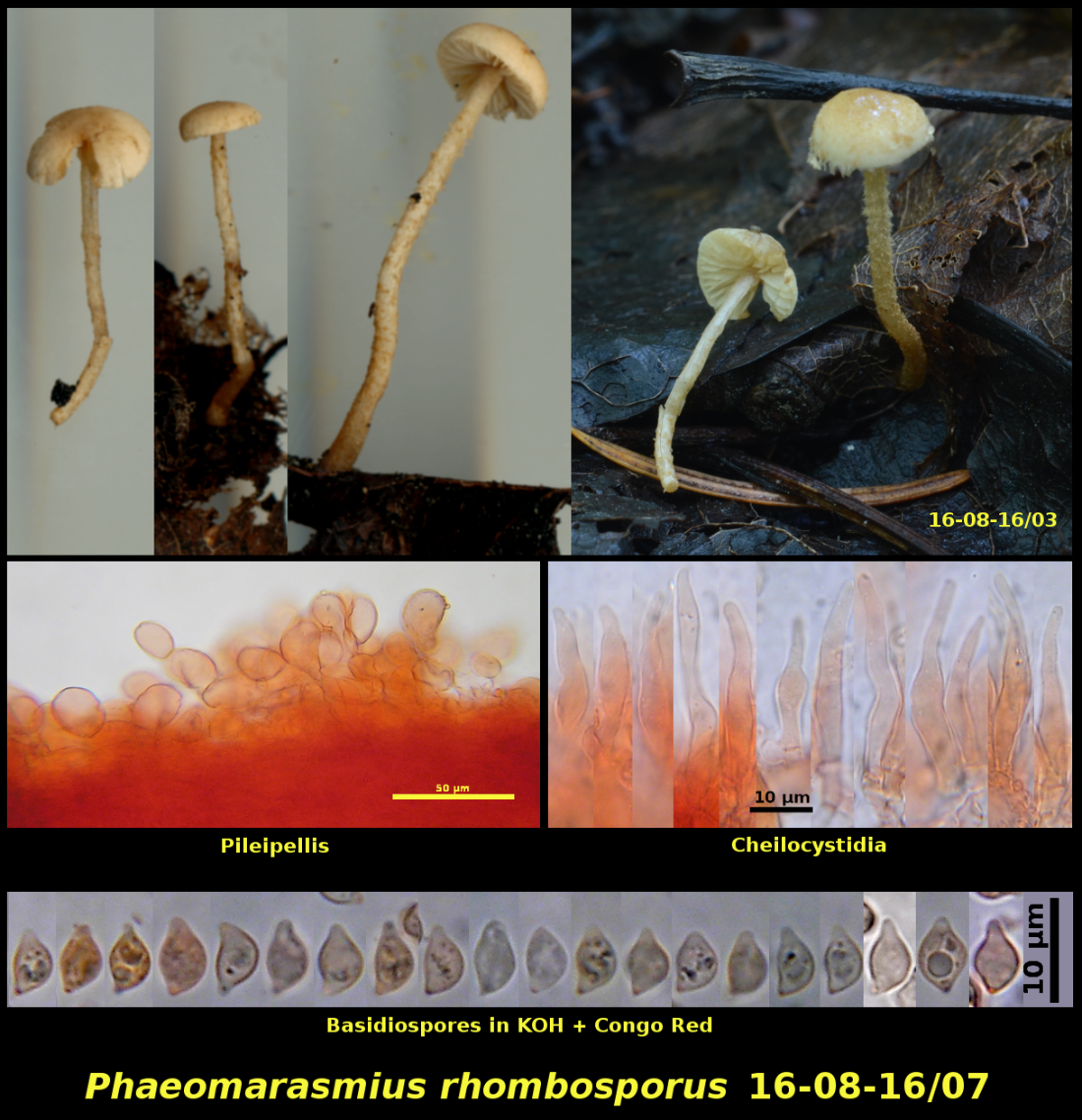Fleshy Fungi of New Brunswick >>
Phaeomarasmius rhombosporus
Phaeomarasmius rhombosporus (G.F. Atk.) Malloch & Redhead

Gregarious on rotting hardwood leaf litter in mixed forest of Acer saccharinum, Betula alleghaniensis, Abies balsamea, Populus tremuloides and Betula papyrifera, Nepisiguit Protected Natural Area, New Brunswick (16-08-16/07).
Basidiospores limoniform in dorsi-ventral view, strongly curved-limoniform in profile, smooth, inamyloid, 5.7-7.1 X 3.5-4.6 µm, D/d = 1.50-1.83 (average[20]: 6.3 X 3.9 µm, D/d = 1.64). Pileipellis composed of chains of round, encrusted cells.
This tiny mushroom can be found on fallen leaves of hardwood trees, especially aspen in our area. It is characterized by its scaly stipe and its granular cap. The peculiar basidiospores are very thin-walled, collapsing easily in microscope mounts, and, although they are light brown in mass, appear hyaline under the microscope.
In much of the modern literature P. rhombosporus has be treated as a species of Flammulaster. However, Petersen, Knudsen & Seberg (Cladistics 26:62-71. 2010) considered the two genera to merge into one another and chose to unite the species of both under the older name Phaeomarasmius. As reported in Funga Nordica, European collections of this species have larger basidiospores than the ones reported here, but our material is in agreement with Canadian collections reported in Fungi Canadenses 142.
In the above illustration all photos are from 16-08-16/07 with the exception of the one from the field, which is 16-08-16/03. The two collections were made on the same day in areas about 100 meters apart.
Photograph: D. Malloch (16-08-16/03, 16-08-16/07).